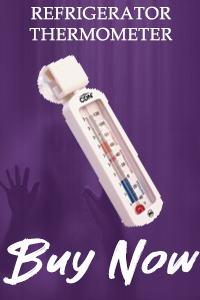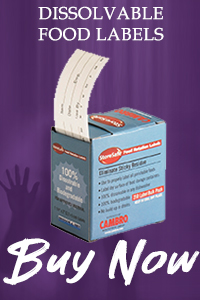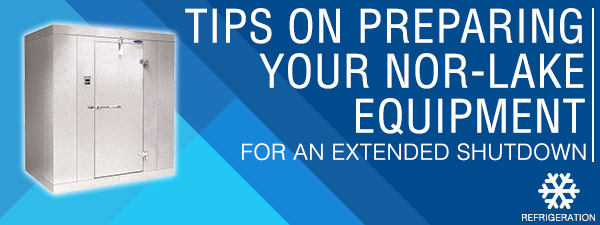Routine Cleaning & Organization Tips for Your Commercial Refrigeration
- Oct 30, 2019
- 0 Comments

The use of proper cleaning and storage techniques make a huge difference when it comes to maintaining your refrigerator - so much so, in fact, that there's a holiday for those who let these routines slide: the ominously-named Haunted Refrigerator Night.
But while Haunted Refrigerator Night fits in perfectly with the general spooky theme we all associate with October, you will have more than ghostly odors and mystery molds to contend with if you don't take the necessary steps to keep your commercial fridge clean and well-organized.
Refrigerators are one of the main tools used to keep your restaurant or bar's food safe for future consumption. It's understandable then, that health inspectors place a lot of importance on correct usage - an uncleaned mess could contaminate surrounding food, or a loose gasket could cause the temperature within the fridge to rise, allowing bacteria to thrive.
To help ensure your refrigerator is safe for food storage, we've compiled some help tips on both cleaning and storage.
Commercial Refrigeration Cleaning and Organization
-
Schedule weekly or biweekly cleanings. While spills and such should be addressed immediately, a more thorough cleaning once every two weeks will help protect the integrity of the food in your fridge.
To clean the interior of your fridge, you will need to remove all the contents (placing them in a different temperature-controlled unit), make up a soapy solution in a bucket, then use a towel to wipe everything down. If possible, remove shelves and drawers for a more comprehensive clean.
Once the interior is clean, use Brite Shine on the exterior to restore its luster and have it looking like new again. Brite Shine uses an oil-based solution that works wonders on stainless steel, nickel steel, copper, aluminum, and brass!
-
Clean your coils. The harder your refrigerator has to work to keep its contents cool, the more likely it is to malfunction. If your refrigerator coils are covered in dust and other debris, that definitely means your fridge is working harder than it has to be. To combat this buildup, we recommend coil cleaning at least twice a year. This will need to be done while the unit is unplugged, so it's helpful to schedule this ahead of time so you know you have space to store the fridge's food.
To make the coil cleaning process easier, you can use a coil cleaning brush or a self-rinsing coil cleaner.
-
Check your gaskets. If your gasket is loose or torn, cold air is probably leaking out of your unit. The items closest to the door will suffer from the temperature fluctuations, and your refrigerator will have to work harder to maintain the temperature.
-
Use a thermometer to ensure the unit is holding temp. Keep a refrigerator/freezer thermometer in your unit and you will be able to see that the temperature range is in the safe zone with just a glance. Our Rapids branded thermometer even has indicators for freezer temperatures, refrigerator temperatures, and dry storage.
-
Keep your food organized. If your fridge is disorganized and cluttered, you risk losing food and not finding it again until after it has gone bad. Use color-coding (our storage containers have multiple graduation colors to choose from, such as green, blue, and red), clear shelf designations, labeling, etc., to ensure that the oldest food gets used first.
-
Label perishables. This trick goes hand-in-hand with keeping organized. You can easily label and date containers using Cambro dissolvable food labels. They allow you to keep track of when food will expire while also eliminating the hassle of scraping the labels off afterwords. These labels will dissolve completely within 30 seconds - just use water!
















